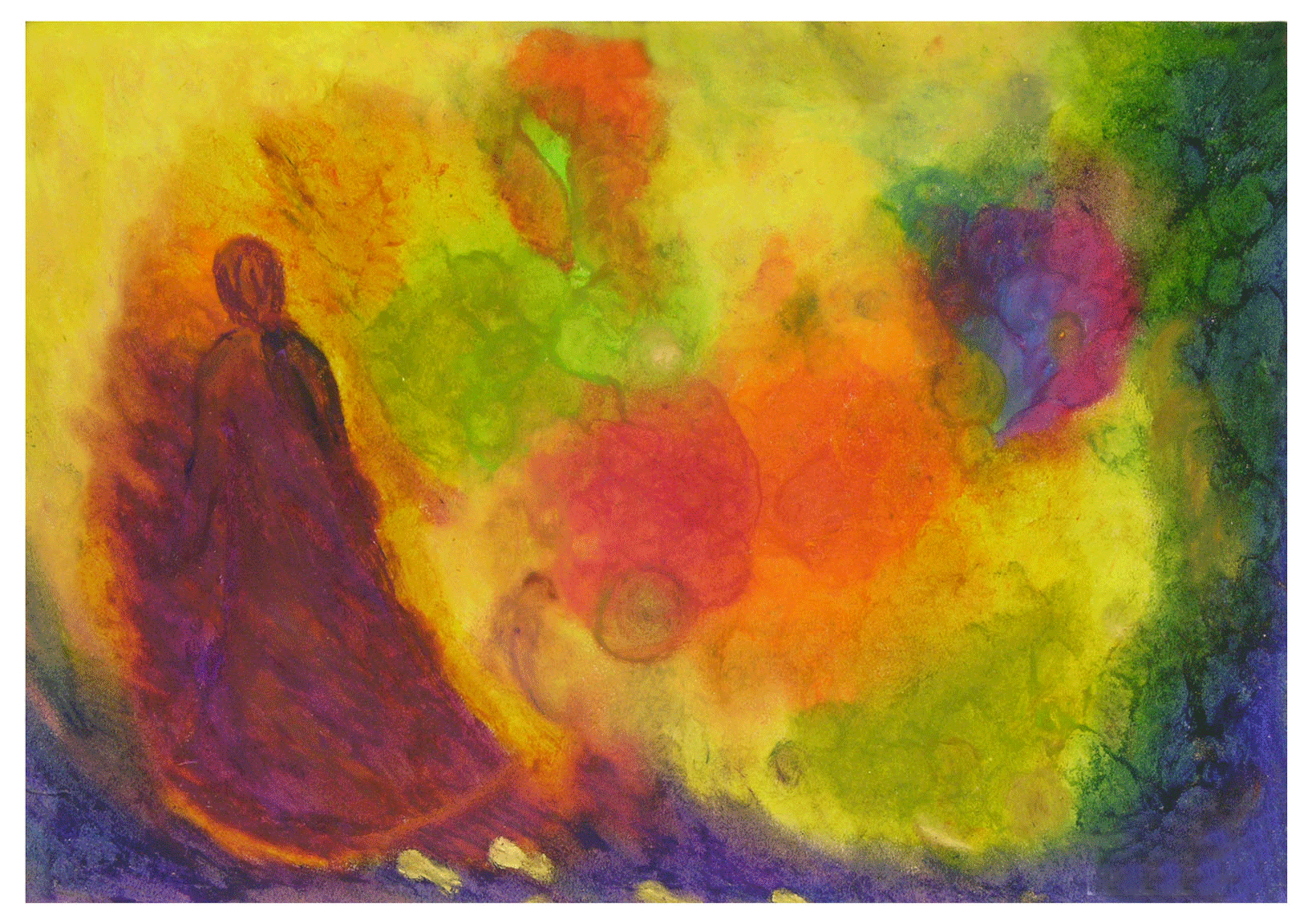Art therapy as a method

Within art therapy, the means of artistic expression are used as tools for the therapeutic process. It is the client’s process in working with a means of artistic expression, which constitutes the focus. The qualitative results of creating the therapeutic work of art are entirely insignificant. This means that it is of no importance whatsoever if the client can carry a note or not when singing, if he or she is able to draw a recognizable house or not and so on. The important aspect of this work lies in what happens for and within the client during the process, what insights he or she may possibly reach because of it. The chief rule for the therapist and the client, and any accompanying clients is that the work of art or artistic expression is never to be commented on in an evaluating or judging manner
Art by chance
It is interesting to observe that the process-oriented use of the means of artistic expression can occasionally result in works of art with high artistic value. The difference between this and works of art deliberately created to be art is that the process-oriented “artist”, i.e. the client, often does not perceive the created work as a work of art, and is seldom able to reproduce another similar work of as high artistic value as the first one. He or she creates art by chance.
The means of artistic expression
In my work as a psychotherapist and counselor, with an emphasis on Gestalt- and art therapy, I use the following means of artistic expression as “tools” in the therapeutic process with my clients:
– Singing and other ways of using the voice
– Painting (image therapy), drawing and drawing therapy, which is a particular form of image therapy
– Drama (psycho drama and drama therapy) – this entails dream work and working with symbols and the telling of and work on stories and fairytales
– Sculpting in clay or other materials
– Creating collages
– Writing letters, poems, fairytales, short stories, music etc.
In support of the work with several of the aforementioned techniques, I also employ breathing techniques in a system I call active expiration.
The means of artistic expression
One of the works by the Danish Psychologist and Gestalt therapist Hanne Hostrup, details and describes a form of art therapy that she herself has developed, i.e. drawing therapy. She mainly portrays the basics, methods and principles of drawing therapy. Her views can surely be applied on psychotherapeutic use of the means of artistic expression overall. She describes the role of the therapist in using drawing therapy as not only to help clients work with images and understand them on the basis of theories, but that what makes art therapy psychotherapy is that a therapist – with his or her methods and suppositions anchored in theory – helps the client to get optimal possibilities to experience and recognize the significance of the messages inherent in the images, dream symbols, poems, dramatizations etc. that they themselves create, along with the acts and conversations that take place around them and their creation.
Artifacts can be interpreted according to various frames of reference, for instance, the Freudian or the Jungian interpretations, depending on the therapist’s specialization. It is, however, of utmost importance that the therapist makes him- or herself acquainted with and respects the client’s own interpretation, as it is the only correct key to the next step of the therapeutic process. If the therapist interprets the client’s image or experience thereof, he or she loses contact with the client and the importance that the image or the experience thereof have for the client. If this happens, the therapist is mainly connected to his or her own imagination. This will result in a break in contact, which will certainly not be beneficial to the therapeutic process.
Another pitfall for the unaware therapist is to evaluate or judge a work created during therapy, even if the comment was to be “positive”. Judgment or evaluation easily result in the client feeling that his or her work will be judged, and the client will more or less consciously let this affect his or her art therapeutic work in the future. This in turn disrupts the therapeutic process.
The only thing actually allowed for the therapist to do is to pose questions. This demands more than just knowledge of the use of the means of artistic expression in use. It demands a distinctly psychotherapeutic approach and practice in supporting the client in working through the images, dramatizations, poems, letters, compositions etc. created along with themes that emerge in the art therapy. Aside from this, the method demands skill, ability and a will to be in contact with the client through the therapeutic process in such a way as to bring about insights. The intrinsic value of art therapy lies first and foremost in being able to offer the client modes of expression that brings important psychological material into the outer world, so that the client and the therapist jointly can process it in an insightful and defensible manner.
Text and illustrations: Tine Sylvest
Photographs: Bo Mellberg
The author is a certified Psychotherapist, Art Therapist and Workplace Counselor/Coach born in Denmark, currently living and practicing in the Swedish-speaking parts of Finland.
Next page : The contribution of Gestalt therapy to art therapeutic work
